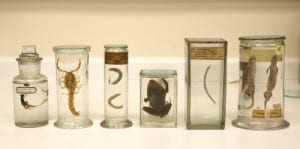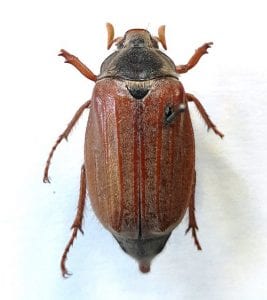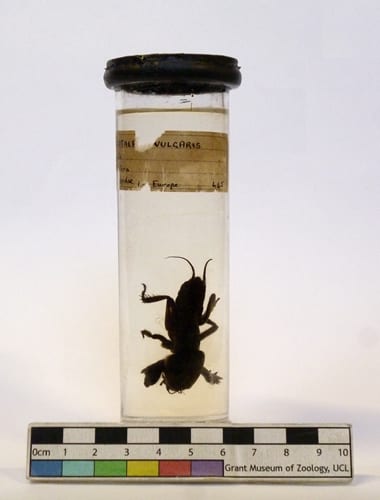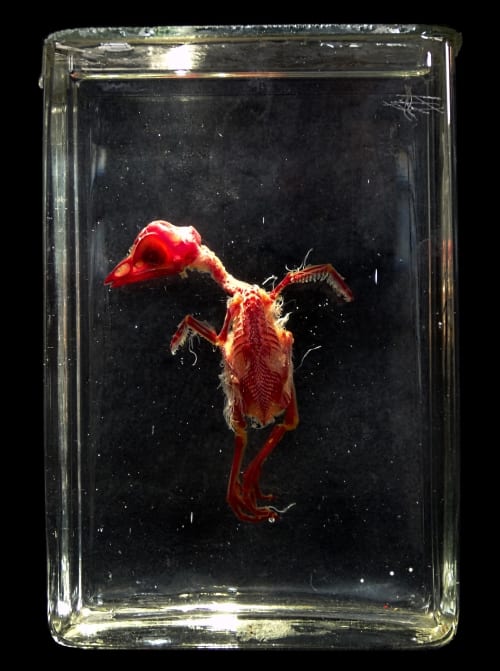
Fluid preserved specimens newly conserved
Over the past year, UCL Museums’ conservation team have been focussing our efforts on the the specimens preserved in fluid at the Grant Museum. We’re calling it Project Pickle*.
Before we could start conserving the objects we had to establish the scale of the task, so we could decide how to plan the work. We went through the entire fluid specimen store, surveying a whopping 3,787 specimens to determine what treatments each of them needed.
This initial phase took many months to complete and involved the help of student volunteers and a student placement. The result of that survey means that we can now quantify how many specimens are in good, fair, poor or unacceptable condition with the aim to prioritize conserving the specimens in the worst condition. So why do fluid preserved specimens need conservation and how do they get to be in an ‘unacceptable condition?’
(more…)
 Close
Close









